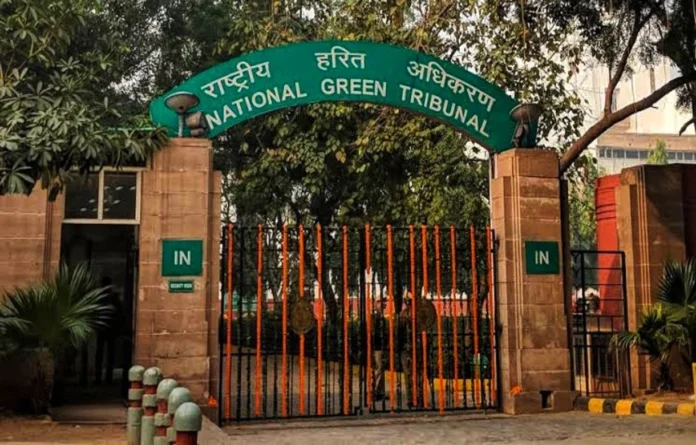The National Green Tribunal (NGT) passed certain directions to the Department of Forest, Ecology and Environment, Government of Jammu and Kashmir related to wetland / lakes.
The Principal Bench of Justice Prakash Shrivastava, Justice Arun Kumar Tyagi and Dr A. Senthil Vel heard an application registered suo motu on the basis of news item appearing in newspaper dated 02.02.2024. This news item raised the issue of deteriorating condition of wetlands especially in Kashmir. The news item highlights encroachment, cultivation activities, sedimentation, haphazard planning and waste discharge in the wetlands.
On the advance notice, a report by J & K Pollution Control Committee (J&KPCC) was filed indicating the name of the nine wetlands and providing the water quality. No details of encroachment or waste discharge were provided. The Central Pollution Control Board (CPCB) in its report indicated that five wetlands have been declared Ramsar sites of the 11 wetlands. The Ministry of Environment and Forests (MoEF) has submitted that there are only 3 Ramsar sites.
The Tribunal requested the MoEF to provide the exact number of Ramsar sites in Jammu & Kashmir. On September 10, the matter came up for hearing and the fresh report filed by J&KPCC dated 07.09.2024 was considered by the NGT.
As per the report, there are 12 wetlands/water bodies namely Hygam wetland, Freshkoori Wetland, Kranchoo Wetland, Chatlam Wetland, Manibugh Wetland, Dal Lake, Anchar Lake, Hokarsar Wetland, Hokersar, Wular Lake, Manasbal and Shalibug Wetland.
The Report indicates low dissolved oxygen, higher concentration of BOD, high coliforms in some of the wetlands and lakes. The water quality is medium to good in most of the above wetlands/lakes and, in particular, Freshkoori wetland in Pulwama, the water is heavily polluted.
The report also indicates the presence of solid waste, plastic waste and bio-medical waste in the wetlands/lakes. Details of the work carried out under CAMPA during the last 5 years 2019 to 2024 are also listed. Member Secretary, J & K PCC was virtually present and when asked about the actions taken against the concerned authorities for the violations of the Wetlands (Conservation and Management) Rules 2017, The Water (Prevention and Control of Pollution) Act 1974 and Environment (Protection) Act, 1986, he indicated that no such action has been initiated so far. He has assured that the J & K PCC will identify the violation and take action in accordance with the rules and shall furnish a report.
A report has also been filed by the Department of Forest Ecology and Environment. The report merely indicates the status of the wetland/lakes and does not provide any details about conservation and protection measures laid down in the Wetland (Conservation and Management Rules 2017 and Environment (Protection) Act, 1986) Mr. Vivek Modi, Special Secretary (Technical), Forest, Ecology & Environment Department, UT of J & K was present virtually. When asked about the steps taken to prevent encroachment and, status of protection of the wetlands as per Wetland (Conservation and Management) Rules 2017 he was unable to provide any information.
The counsel for MoEF was present and she informed the Bench that she had received a copy of the response from MoEF & CC late in the evening. Hence it could not be filed in time.
In view of the above facts and details provided, the NGT directed the Department of Forest Ecology and Environment, Government of J & K to provide:
i. Total Number of wetlands/lakes in Jammu and Kashmir.
ii. Geo coordinates of each of the above wetlands/water bodies.
iii. The area covered by such wetland/lake as per the revenue records and the area at present for each of the above wetland/water bodies. The present area shall be calculated based on the satellite images of past three years pertaining to the above wetland (2021 -2022, 2022-2023, 2023-2024)
iv. Details of drains, nalas such other inlets carrying treated/untreated sewage/effluent in the above wetland/water bodies.
v. List of such polluting units/townships/commercial bodies etc discharging untreated effluent into the wetland/water bodies.
vi. Water quality of each of the above wetland/water bodies analysed post monsoon. vii. Conservation/management plan prepared in accordance with Wetland (Conservation and Management) Rules, 2017 for each of the above wetland/water bodies.
viii. The nodal officer who will be responsible for the implementation of above conservation/management plan.
Details of the action taken by the J & K PCC on violations identified that are responsible for polluting/destroying above wetland/water bodies.
The above details shall be furnished within a period of three months by way of affidavit, the Bench directed listing the matter on 23.12.2024.


